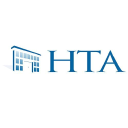/ factorpad.com / stocks / f76mgv.html
An ad-free and cookie-free website.
Our quantitative data points are meant to provide a high-level understanding of factors in equity risk models for Healthcare Trust Of Ame-Cl A. Portfolio managers use these models to forecast risk, optimize portfolios and review performance.
We show how HTA stock compares to 2,000+ US-based stocks, and to peers in the Finance and Insurance sector and Other Financial Vehicles industry.
Please do not consider this data as investment advice. Data is downloaded from sources we deem reliable, but errors may occur.
 Healthcare Trust of America, Inc. is the largest dedicated owner and operator of medical office buildings in the United States, comprising approximately 25.4 million square feet of GLA, with $7.5 billion invested primarily in medical office buildings as of December 31, 2020. HTA provides real estate infrastructure for the integrated delivery of healthcare services in highly-desirable locations. Investments are targeted to build critical mass in 20 to 25 leading gateway markets that generally have leading university and medical institutions, which translates to superior demographics, high-quality graduates, intellectual talent and job growth. The strategic markets HTA invests in support a strong, long-term demand for quality medical office space. HTA utilizes an integrated asset management platform consisting of on-site leasing, property management, engineering and building services, and development capabilities to create complete, state of the art facilities in each market. This drives efficiencies, strong tenant and health system relationships, and strategic partnerships that result in high levels of tenant retention, rental growth and long-term value creation. Headquartered in Scottsdale, Arizona, HTA has developed a national brand with dedicated relationships at the local level.
Healthcare Trust of America, Inc. is the largest dedicated owner and operator of medical office buildings in the United States, comprising approximately 25.4 million square feet of GLA, with $7.5 billion invested primarily in medical office buildings as of December 31, 2020. HTA provides real estate infrastructure for the integrated delivery of healthcare services in highly-desirable locations. Investments are targeted to build critical mass in 20 to 25 leading gateway markets that generally have leading university and medical institutions, which translates to superior demographics, high-quality graduates, intellectual talent and job growth. The strategic markets HTA invests in support a strong, long-term demand for quality medical office space. HTA utilizes an integrated asset management platform consisting of on-site leasing, property management, engineering and building services, and development capabilities to create complete, state of the art facilities in each market. This drives efficiencies, strong tenant and health system relationships, and strategic partnerships that result in high levels of tenant retention, rental growth and long-term value creation. Headquartered in Scottsdale, Arizona, HTA has developed a national brand with dedicated relationships at the local level.
Many of the following risk metrics are standardized and transformed into quantitative factors in institutional-level risk models.
Rankings below represent percentiles from 1 to 100, with 1 being the lowest rating of risk.
Stocks with higher beta exhibit higher sensitivity to the ups and downs in the market. (↑↑)
Stocks with higher market capitalization often have lower risk. (↑↓)
Higher average daily dollar volume over the past 30 days implies lower liquidity risk. (↑↓)
Higher price momentum stocks, aka recent winners, equate to lower risk for many investors. (↑↓)
Style risk factors often include measures of profitability and payout levels.
Companies with higher earnings generally provide lower risk. (↑↓)
Companies with higher dividend yields, if sustaintable, are perceived to have lower risk. (↑↓)
/ factorpad.com / stocks / f76mgv.html
A newly-updated free resource. Connect and refer a friend today.